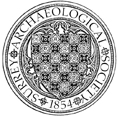Millmead Road, Guildford
Observation by GMVEU of the construction of a wet well by Guildford Borough Council and Thames Water Utilities located substantial quantities of worked timbers dated to the medieval period and thought to represent a wharf. Medieval and post-medieval leather, pottery and metal finds were recovered from the spoil. (282)


